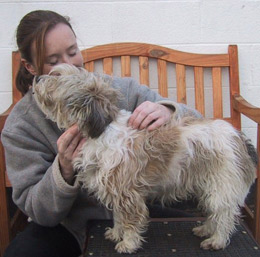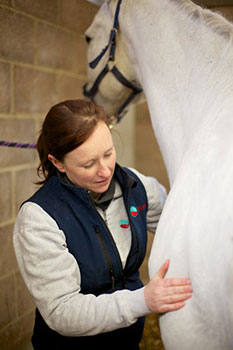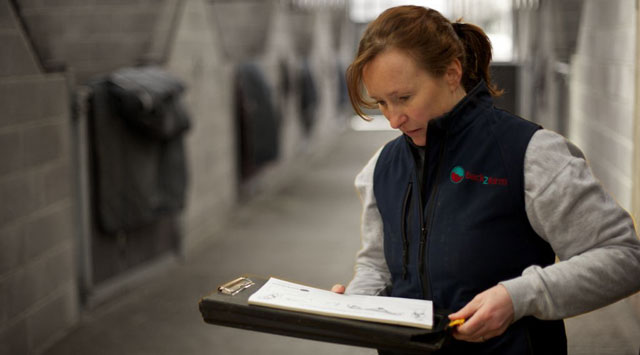Back2Form Therapies
Jess uses a combination of therapies depending on the nature of the problem your animal has, and the way they react to the specific therapies. Every treatment is different and is tailored specifically for your animal, and your requirements.
As a member of the McTimoney Animal Association and the International Equine Bodyworker Association Jess undertakes to complete a certain number of hours of Continued Professional Development to ensure her skills are constantly updated. Jess also enjoys being able to add new skills to her 'toolkit' to enable her to address problems in a variety of ways to ensure the most effective treatment for your animal.
More details about the therapies Jess uses and their benefits are listed below:
Sports Massage including Stress Point Therapy
Pulsed Electromagnetic Therapy
McTimoney Physical Therapy
 McTimoney physical therapy is a holistic or whole body treatment, meaning that you look at the animal as a whole rather than focusing on individual parts of the body. It is a relatively gentle treatment but can have a profound effect.
McTimoney physical therapy is a holistic or whole body treatment, meaning that you look at the animal as a whole rather than focusing on individual parts of the body. It is a relatively gentle treatment but can have a profound effect.
McTimoney chiropractic was originally developed for people by John McTimoney, but in the 1950s he adjusted the treatment so that it could also be used on animals. For more than 40 years now McTimoney physical therapists have been helping animals using chiropractic adjustments which are gentle and non-invasive to align and balance the animal’s musculoskeletal system, helping reduce pain, and restore well-being.
The area that is focused on is the musculoskeletal system, especially the spine, and including the pelvis. It is particularly concerned with the relationship between the spine and the nervous system. The aim is to restore flexibility to the skeletal frame by realigning any misalignments in the vertebrae of the spine, and the pelvis.
If you imagine the vertebrae of the spine as a series of blocks all fitted together, with a hole running down the middle of them, rather like beads on a necklace. All the nerves in the body run through the middle of the spinal column and branch out all the way down the spine. These control everything in the animal’s body – from his ability to feel pain, to the muscles that control the way the horse moves, to the respiratory system.
 Sometimes these blocks can become misaligned. This is not a dislocation; it is a subtle movement of the bones within their normal range of motion, causing a bone(s) to become fixed - usually at the extent of its normal range - and its range of motion becomes reduced. The body protects itself by tightening all the muscles around the joint which can then lead to asymmetries within the rest of the body.
Sometimes these blocks can become misaligned. This is not a dislocation; it is a subtle movement of the bones within their normal range of motion, causing a bone(s) to become fixed - usually at the extent of its normal range - and its range of motion becomes reduced. The body protects itself by tightening all the muscles around the joint which can then lead to asymmetries within the rest of the body.
Nerve impulses from the spinal cord can be restricted by a misaligned joint in between vertebrae leading to muscle spasm, pain, and loss of normal function. Blood flow can also be affected in the area leading to further muscle spasm.
Precise rapid adjustments using only the hands allow misaligned joints to return to their normal position, therefore allowing the body's own healing mechanism to restore health, soundness and performance by decreasing pain, allowing and allowing freer movement.
Sports Massage
 Sports massage is used both during rehabilitation after an injury, or to help prevent injury occurring as a result of fatigue or strain. Minor muscle injuries can take up to 3 months before they become apparent by which time they may have caused a more serious injury.
Sports massage is used both during rehabilitation after an injury, or to help prevent injury occurring as a result of fatigue or strain. Minor muscle injuries can take up to 3 months before they become apparent by which time they may have caused a more serious injury.
Prompt treatment of small injuries can help prevent more serious issues occurring and can help your horse maintain optimum performance.
Massage can have the following benefits: it increases the range of motion of the limbs; improves suppleness and flexibility; relaxes muscle spasm; reduces and relieves muscle fibre adhesion; helps prevent further injury; maintains muscle tone; increases circulation and lymphatic drainage; relaxes and calms the horse and improves stamina.
Equine sports massage works very effectively alongside McTimoney physical therapy to ensure that the horses body is best able to maintain the correct skeletal structural alignment to enable his muscles, ligaments and tendons to work to their full potential.
Stress Point Therapy
Stress point therapy, sometimes known as Trigger Point or Accurate Therapy, is a highly effective massage technique that targets areas of muscle spasm by the application of direct pressure which creates hyperemia (an increase in circulation), followed by cross fibre friction to restore free movement of the muscle fibres.
Passive and Active Stretches
 As part of her treatment Jess uses both passive and active stretches to help restore/maintain a normal range of movement. Stretching can help improve scope, flexibility and quality of movement which makes the whole body more resistant and resilient to stress and strain. Muscles work in pairs and are dependent on their opposing partner’s ability to stretch to enable efficient contraction. Therefore performance is not only dependant on the strength of the muscle but also the flexibility.
As part of her treatment Jess uses both passive and active stretches to help restore/maintain a normal range of movement. Stretching can help improve scope, flexibility and quality of movement which makes the whole body more resistant and resilient to stress and strain. Muscles work in pairs and are dependent on their opposing partner’s ability to stretch to enable efficient contraction. Therefore performance is not only dependant on the strength of the muscle but also the flexibility.
When appropriate, as part of her aftercare advice Jess shows her clients some stretches that they can use to help their animal maintain the mobility and freedom of movement gained from the treatment.
It can be extremely effectively used both pre and post competition to help the horse achieve its full potential. Stretching of soft tissue helps to prepare the muscles for strenuous activities, and improves endurance levels. It also helps the muscles recover more quickly from these activities, and helps speed repair of any damaged muscle tissue.
Pulsed Electromagnetic Therapy
Jess owns an ACTIVO-MED COMBI PRO – Pulsed Electromagnetic Field Therapy and massage rug which she uses when needed either before or after a treatment. The rug is also available to clients for hire from Jess should they wish to use it before an important competition, or as part of a rehabilitation programme following injury.
Pulsed Electromagnetic Therapy, also referred to as PEMF, uses a range of different frequencies to help stimulate different cells in the body, helping them to work more efficiently. Magnetic therapy is a complementary way to enhance the relief of pain. The magnets themselves do not heal – they create an environment in the body that helps speed up the natural healing process by removing inflammation and restoring circulation. It is believed this is achieved when the blood stream and nerves are stimulated as the blood passes through the magnetic field.
Whilst PEMF can be used day to day for general health and well being, it can also be used for rehabilitation and healing, helping to aid the repair of soft tissue injuries, reducing inflammation, for pain relief and even the healing of fractures.
Acupressure
 Jess attended the Equinology Level 1 Equine Acupressure course where she learnt the locations and uses of more than 120 equine acupressure points, twelve organ channels (meridians) and two extraordinary flows of energy. According to Traditional Chinese Medicine (TCM), in order for a horse to have complete health of mind, body and spirit, he must have adequate amounts of three types of energy, known as the three treasures. If the horse is missing the correct amount or function of any of these aspects of health he will most likely experience a lack of emotional balance and/or less than optimum physical health.
Jess attended the Equinology Level 1 Equine Acupressure course where she learnt the locations and uses of more than 120 equine acupressure points, twelve organ channels (meridians) and two extraordinary flows of energy. According to Traditional Chinese Medicine (TCM), in order for a horse to have complete health of mind, body and spirit, he must have adequate amounts of three types of energy, known as the three treasures. If the horse is missing the correct amount or function of any of these aspects of health he will most likely experience a lack of emotional balance and/or less than optimum physical health.
Acupressure methods are used to support horses of any age and discipline including performance horses, horses in training, the aging horse and others. Jess often uses acupressure techniques to calm and relax animals prior to, and at the end of a treatment.
The Masterson Method™
The Masterson Method™ finds and releases accumulated muscle and structural stress in key junctions of the horse's body that affect performance.
It focuses on releasing tension in these junctions of the body such as the poll, neck/shoulder/withers junction, and sacro/lumbar junction. Jess uses some of these techniques, and finds them extremely effective alongside the sports massage.


